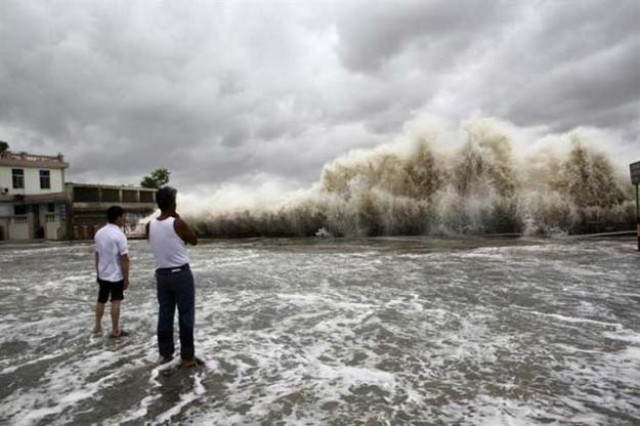
Ed Hawkins, professor at the University of Reading in the UK, has created a GIF using data from the UK Met Office’s Hadley Centre and the University of East Anglia’s Climatic Research Center which documents the world’s average temperature anomaly monthly and annually going back to the year 1850.
‘Pakistan ranks eight among countries affected by climate change’
“I can’t quite believe it,” said Hawkins, who claimed that his university’s servers were “struggling a bit” Tuesday morning as large numbers of people were apparently watching the animation. As of now, the GIF has been retweeted over 12,000 times already.
Spiralling global temperatures from 1850-2016 (full animation) https://t.co/YETC5HkmTr pic.twitter.com/Ypci717AHq
— Ed Hawkins (@ed_hawkins) May 9, 2016
“It was just designed to try and communicate in a different way. As scientists I think we need to communicate, and try different things, and this was just one of those trials, and it has turned out very well,” Hawkins says. He credits Jan Fuglestvedt, a fellow researcher at the University of Oslo, with suggesting the idea of a spiral to him.
Using monthly temperature data, Hawkins plotted them in the form of a spiral, so that for each year, there are twelve points, one for each month, around the center of a circle – with warmer temperatures farther outward and colder temperatures nearer inward. Further, he took the pre-industrial baseline temperature to be the average temperature from 1850 to 1900, and put out markers for where a 1.5 degree Celsius rise above that temperature would be, and where at 2 degree Celsius rise would be, in the form of larger, red concentric circles.
It should be noted that the world pledged to try to avoid the 1.5 and 2 degree C markers in the recent Paris climate agreement.
Climate change: ‘Average global temperature has increased by 0.7oC’
The animated spiral approach used by Hawkins shows that we’re moving in that direction, especially with the temperatures of 2016, so 1.5 degrees looks quite close. This makes global warming instantly visible, and shows that the danger zones aren’t so far away.
The climate scientist also published research suggesting that the world could cross the 2 degree threshold by the year 2060, if emission levels stay high. This means that the 1.5 degree threshold is even closer.
He gives two reasons for this increase in global warming at the end of the animation. The first is that from the 1950s through the 1970s, scientists believe that sulfate aerosols from air pollution helped counter the warming effects of carbon dioxide and kept the planet, temporarily, cooler than it might have been otherwise. But when that pollution was cleared away, around the 1970s, a sharper warming trend began.
The second reason was the 1998 El Nino, followed by this year’s powerful El Nino, which seem to have represented a kind of step change, in which temperatures burst upward (or in this case, outward) and then stay at or around a new plateau.
This article originally appeared on Washington Post.


















COMMENTS
Comments are moderated and generally will be posted if they are on-topic and not abusive.
For more information, please see our Comments FAQ